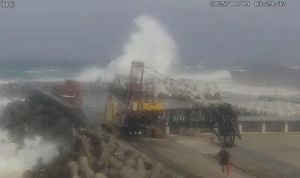Russia’s increasingly aggressive actions against Europe have set off alarm bells across the continent, as European Commission President Ursula von der Leyen warned on October 8, 2025, of a "targeted gray zone campaign" that includes airspace violations, sabotage, and cyberattacks. The warning, delivered to EU lawmakers in Strasbourg, comes after a series of alarming incidents over the past two weeks—fighter jets breaching Estonia’s airspace and drones brazenly overflying military bases and critical infrastructure sites in Belgium, Denmark, Germany, Poland, and Romania, according to the Associated Press.
“Europe must respond. We must investigate every incident, and we must not shy away from attributing responsibility because every square centimeter of our territory must be protected and safe,” von der Leyen told the European Parliament. Her message was clear: if the EU hesitates, the so-called “gray zone”—that ambiguous space between peace and open conflict—will only grow, giving malign actors more room to maneuver.
These warnings are not just rhetorical flourishes. The European Union’s executive branch, under von der Leyen’s leadership, is preparing an ambitious plan to ensure Europe is ready to confront such hybrid threats by 2030. This plan, expected to be presented as a "road map" to the bloc’s 27 heads of state and government in two weeks, centers on developing a high-tech "drone wall"—a network of systems designed to detect, track, and destroy drones, as well as strike at their operators or control systems on the ground.
EU officials have grown increasingly concerned that Russia could be capable of launching a full-scale attack on another European country within the next three to five years. This assessment, while not a prediction, has put a new sense of urgency behind efforts to bolster the continent’s defenses. The recent spate of airspace breaches and drone overflights is seen as a harbinger of more serious provocations to come if left unchecked.
Von der Leyen was unequivocal about the need for a stronger, more coordinated European response. “If we hesitate to act, the gray zone will only expand,” she cautioned. The EU’s approach is not just about military hardware; it’s about resilience and readiness across the board, from cyber defense to protecting critical infrastructure and countering disinformation campaigns.
The specifics of the plan are ambitious. The proposed "drone wall" would link advanced detection and interception technologies, creating a seamless shield over vulnerable sites. This is no small feat, given the rapid evolution of drone technology and the relatively low cost of these devices compared to the high price of scrambling modern fighter jets. Von der Leyen pointed out the unsustainability of using expensive jets to counter cheap drones, as happened recently when several drones entered Polish airspace. “This is absolutely not sustainable. We need an anti-drone system that is affordable and fit for purpose. For swift detection, swift interception, and when needed, swift neutralization,” she said, adding that Europe has much to learn in this area from Ukraine’s experience.
The economic logic behind the defense push is also front and center. The European Commission insists that at least 65% of any defense project funded with EU money should be based on the continent, to create jobs and ensure that investment remains within Europe. “Most investment goes outside Europe. In other words these are jobs outside Europe. This is absolutely not sustainable,” von der Leyen remarked. “This is European money and we want to see a return on this investment in jobs here in Europe.”
Historically, about two-thirds of member nations’ defense orders have gone to U.S. companies, a trend the Commission now wants to reverse. The rationale is straightforward: building up Europe’s own defense industry not only enhances security but also delivers tangible economic benefits for EU citizens. The hope is that a stronger, more self-reliant Europe will be better equipped to face the multifaceted threats of the modern era.
The mood among EU leaders appears to be hardening. At a summit in Copenhagen just a week before von der Leyen’s address, the bloc’s stance toward drone incidents, sabotage, cyberattacks, and sanction-busting seemed to shift. While Denmark has not directly attributed the recent spate of drone flights over its territory to Russia, the pattern of incidents has left little doubt among many officials about the likely source.
French President Emmanuel Macron has been especially vocal, advocating for a more aggressive approach to Russian provocations. He has called for shooting down drones that enter European airspace and boarding "shadow fleet" ships suspected of illicitly transporting oil, in order to deprive Moscow of vital war revenue. Macron’s position reflects a growing sentiment that Europe must move from reactive to proactive defense, taking the initiative to deter further escalations.
But there are nuances and differences of opinion within the bloc. Some leaders are wary of escalating tensions or being drawn into a tit-for-tat cycle of retaliation. Others argue that only a robust show of resolve will convince Moscow that Europe’s borders—and its sovereignty—are not up for grabs. The debate underscores the challenge of forging a unified response among 27 diverse nations, each with its own history, strategic interests, and threat perceptions.
Underlying all of this is the concept of the "gray zone"—a term that has become increasingly common in security circles. It refers to activities that fall short of open warfare but are designed to destabilize, intimidate, and weaken adversaries. These can include cyberattacks, disinformation, economic coercion, and, as Europe is now experiencing, airspace violations and sabotage. The Kremlin’s playbook, according to EU officials, is to probe for weaknesses, test responses, and exploit divisions within the alliance.
The urgency is compounded by the broader geopolitical context. Russia’s ongoing war in Ukraine has demonstrated both the dangers of complacency and the effectiveness of hybrid tactics. The lessons from Ukraine—where drones, cyberattacks, and sabotage have played a central role—are shaping Europe’s response. Von der Leyen explicitly cited Ukraine as a source of valuable experience in countering these threats.
As the European Union prepares to debate and (potentially) adopt von der Leyen’s roadmap later this month, the stakes could hardly be higher. The outcome will shape not only the continent’s security posture for years to come but also its economic and technological future. The question now is whether Europe can move swiftly enough to close its vulnerabilities before the gray zone expands any further.
Europe’s leaders are facing a moment of reckoning, balancing the need for security with the imperative to preserve unity and avoid unnecessary escalation. But as the recent incidents show, the threats are real, present, and evolving. The next steps taken in Brussels and beyond will be watched closely—not only by European citizens but by adversaries and allies around the world.
As the EU edges toward a new era of defense cooperation and technological innovation, the coming months will reveal whether the continent can truly turn words into action and secure every square centimeter of its territory.





